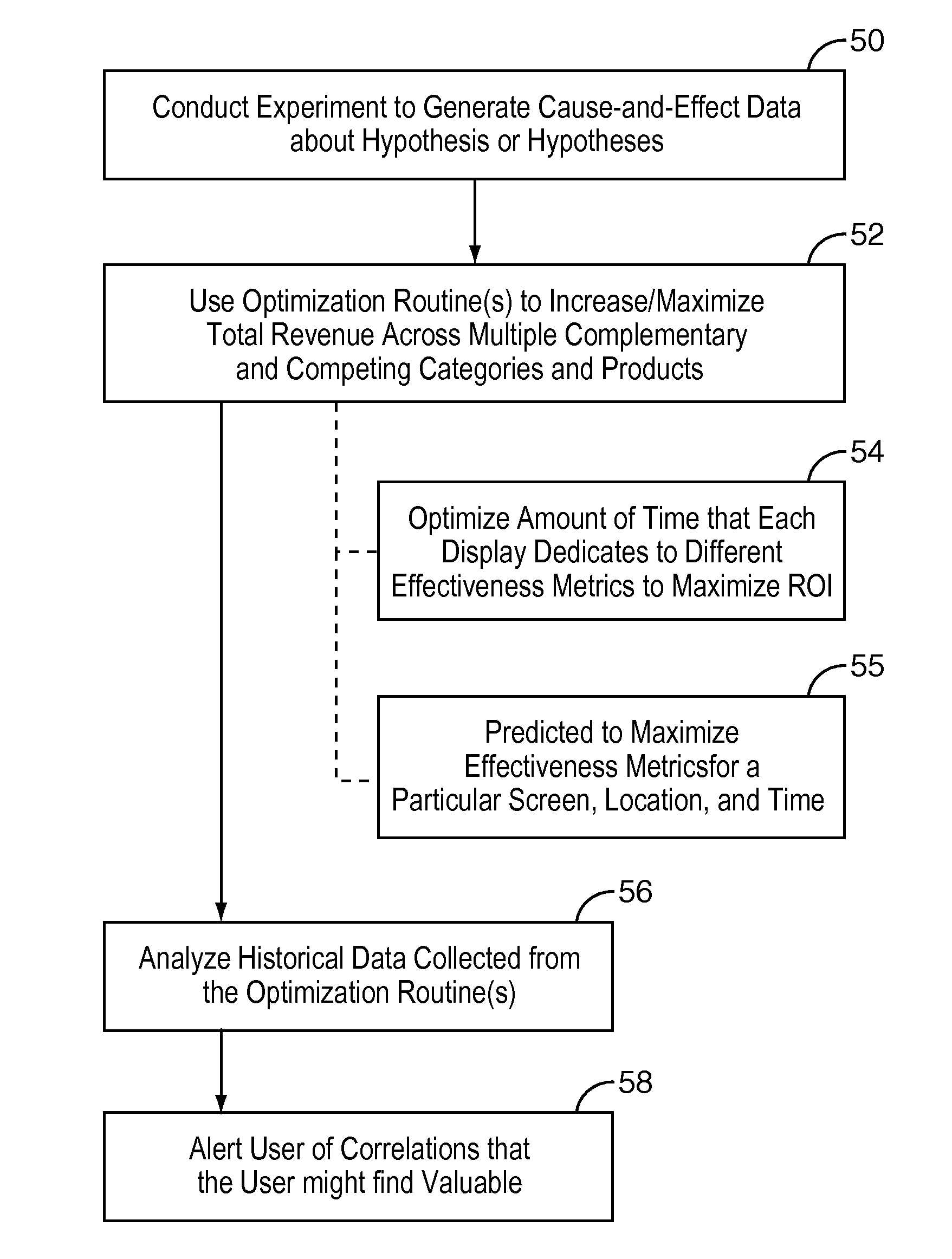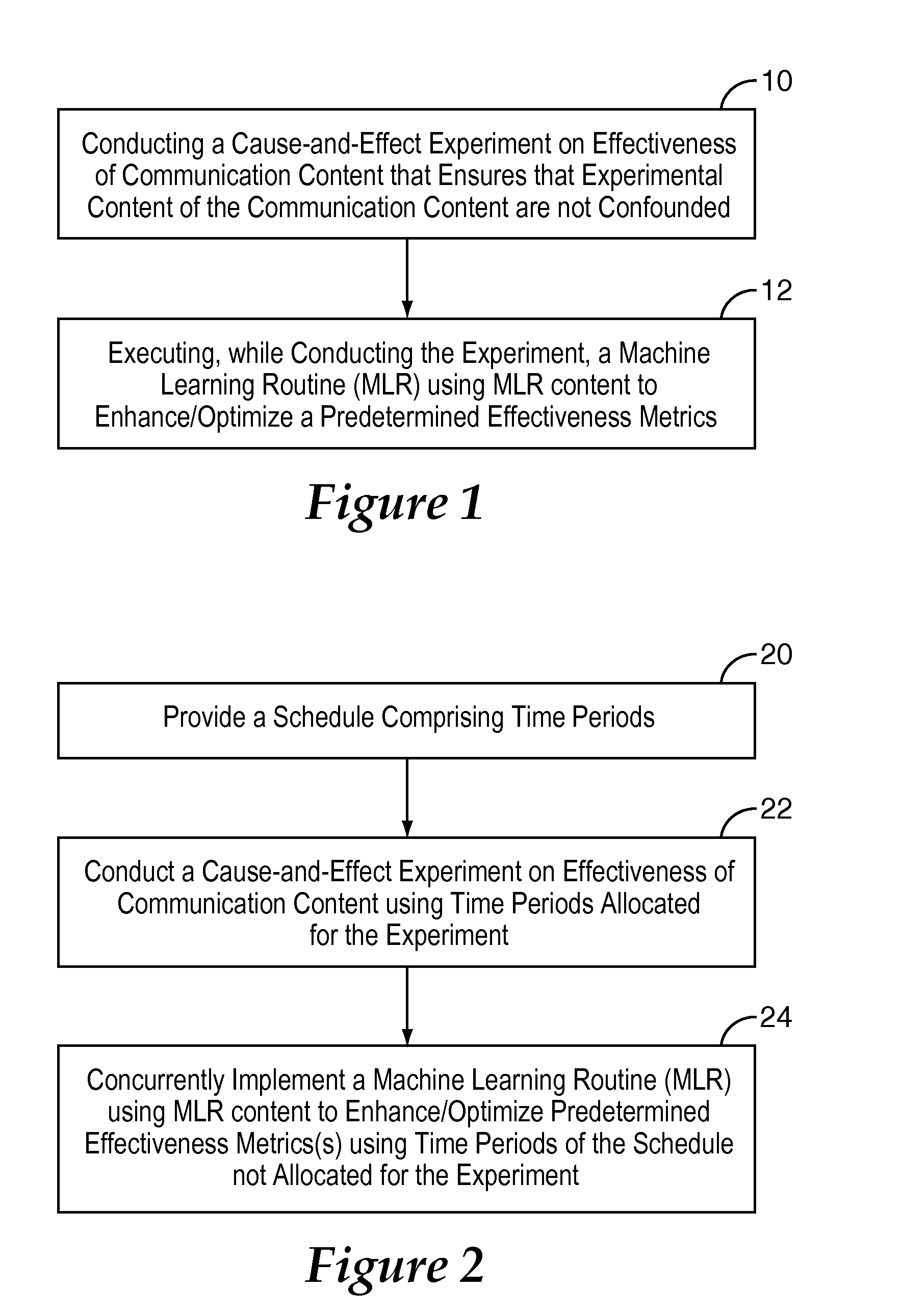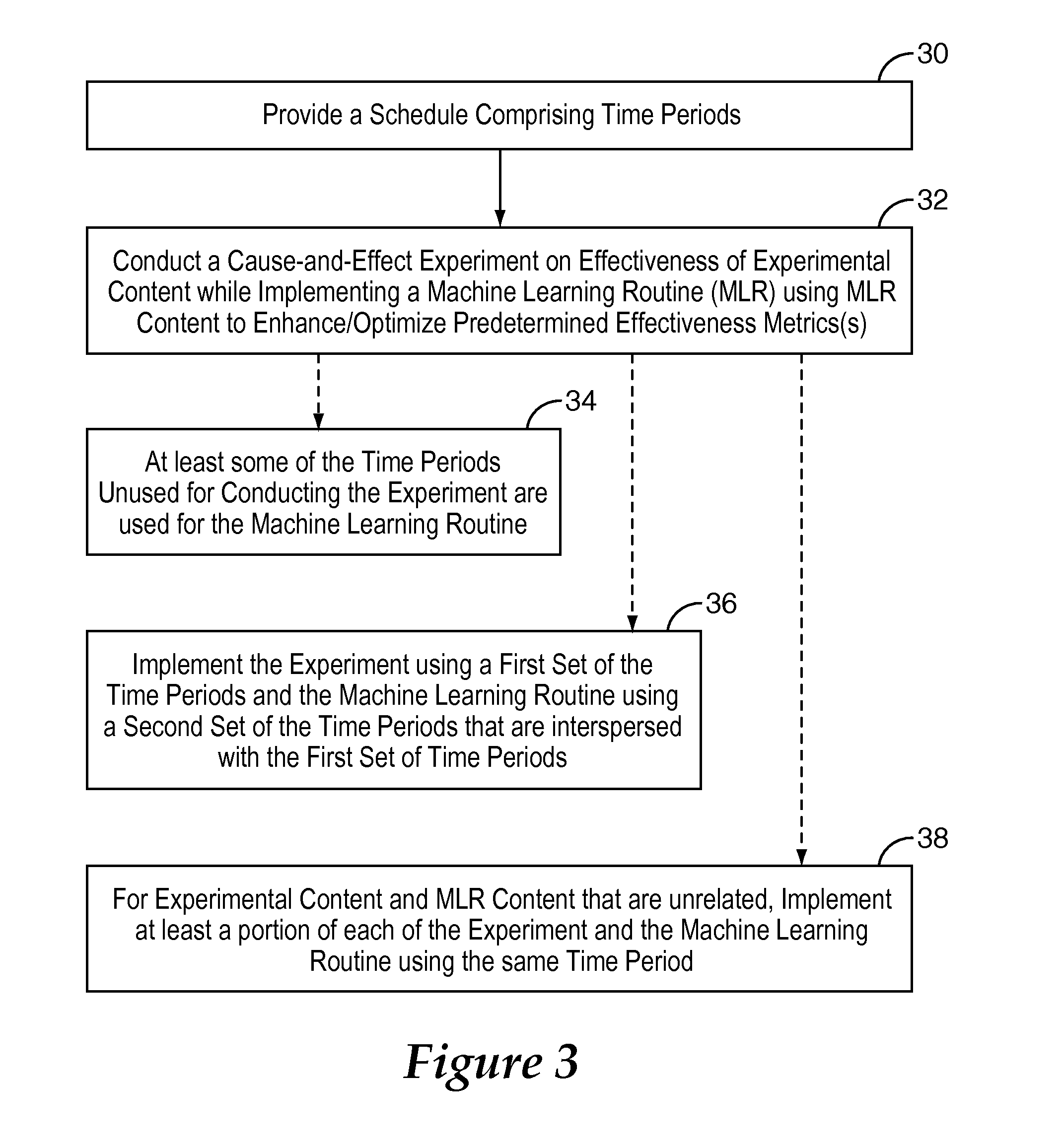System and method for concurrently conducting cause-and-effect experiments on content effectiveness and adjusting content distribution to optimize business objectives
a technology of cause-and-effect experiments and optimization of business objectives, applied in the field of determining the effectiveness of communication content and optimizing content distribution to enhance business objectives, can solve the problems of not reliably revealing causality, marketing leaders have precious little time to mesurably demonstrate the results of marketing efforts, and the level of spending has garnered increasing scrutiny. to achieve the effect of enhancing an effectiveness metri
- Summary
- Abstract
- Description
- Claims
- Application Information
AI Technical Summary
Benefits of technology
Problems solved by technology
Method used
Image
Examples
example # 1
Example #1
[0096]1. What are the dependent measures of interest and what are their characteristics?Input / provide 70 these dependent measures.[0097]a. e.g., overall sales, room upgrades, bar sales, etc.[0098]2. What environmental factors are of interest? Input / provide 72 these factors.[0099]a. e.g., hotel size, hotel location, etc.[0100]3. What content factors are of interest? Input / provide 74 these factors.[0101]a. e.g., content that differs on background color.[0102]b. content that differs in tactical message (e.g., indulge vs. efficiency).[0103]4. What are the visitor visit duration (VVD) for the dependent measures of interest? Input / provide 75 VVD.[0104]a. the VVDs define the longest (or typical) period of time that an observer can experience the digital content and the time that they could act on the content.[0105]b. the VVDs are used to define time-slot samples (TSS) that specify independent periods of time for running a condition of a particular study.[0106]5. Experiment Urgenc...
example # 2
Example #2
[0111]1. Input / provide 80 effectiveness metrics for each property into the system.[0112]a. e.g., bar sales, room upgrades, restaurant sales, etc.[0113]2. Input / provide 82 the value of each effectiveness metric.[0114]a. Different effectiveness metrics may have different profit margins (e.g., bar sales vs. restaurant sales) or they may have different metrics (e.g., number of room upgrades vs. bar sales). Defining the value of each business goal allows the algorithm to compute a single objective function for different pieces of content based upon these values.[0115]3. Choose 83 which content to show on the network.[0116]a. The user selects from their content database the content that they want to use for the machine learning algorithm. This content can be from a content database from previous experiments and / or can be made explicitly for the machine learning routine (e.g., a reinforcement learning routine involving explore and exploit processes, as is described below).[0117]4...
example # 3
Example #3
3a. Experiment Content Distribution
[0150]Manticore is a hotel chain that owns five hotels that have a digital signage network. Manticore has classified their five hotels by location type (Urban vs. Suburban) and their size in terms of the number of rooms (Small, Medium, Large).
[0151]Manticore wants to understand whether adding a human model in an advertisement increases the likelihood that a customer will choose to upgrade their room (Step 1 in Example #2 above). Because it costs Manticore royalty fees to use a model in their advertisements, they are interested in determining the benefit of using a model over not using a model. They have reasons to believe that the effect of adding a model might be different for their Urban hotels versus their Suburban hotels (Step 2 in Example #2 above).
[0152]Manticore designed two pieces of content that are identical in all ways with the exception of one: One piece of content has a model (RoomUpgrade-Model) while the other does not (Room...
PUM
 Login to View More
Login to View More Abstract
Description
Claims
Application Information
 Login to View More
Login to View More - R&D
- Intellectual Property
- Life Sciences
- Materials
- Tech Scout
- Unparalleled Data Quality
- Higher Quality Content
- 60% Fewer Hallucinations
Browse by: Latest US Patents, China's latest patents, Technical Efficacy Thesaurus, Application Domain, Technology Topic, Popular Technical Reports.
© 2025 PatSnap. All rights reserved.Legal|Privacy policy|Modern Slavery Act Transparency Statement|Sitemap|About US| Contact US: help@patsnap.com



